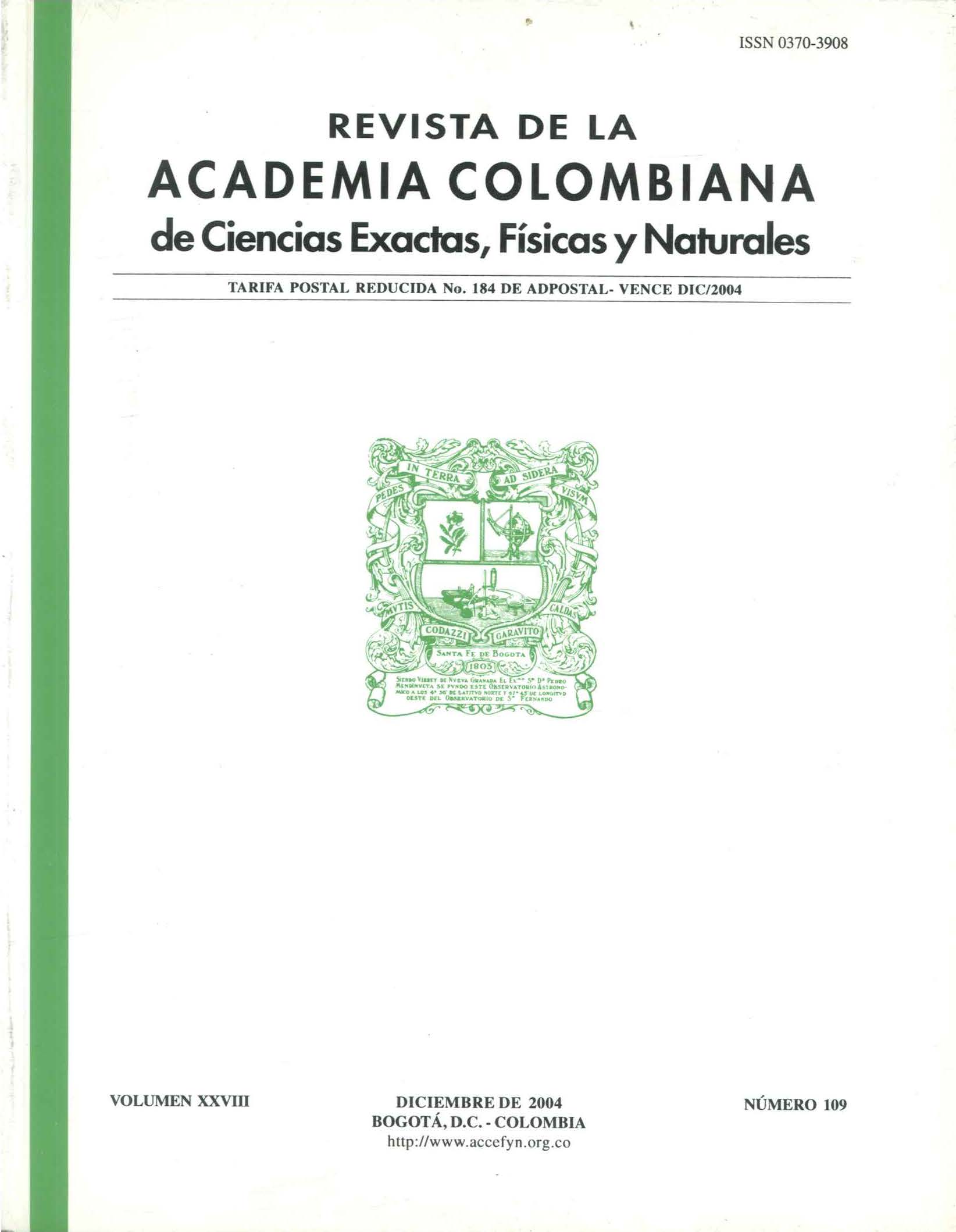Resumen
Dos nodos de Ranvier se modelan mediante circuitos de FitzHugh-Nagumo acoplados el´ectricamente y se estudia su comportamiento din´amico. El par´ametro de acoplamiento, con valores en la vecindad de la bifurcaci´on de Hopf, genera variados tipos de comportamiento que dependen adem´as de las condiciones iniciales: excitabilidad, biestabilidad y birritmicidad.
Referencias
Hodgkin, A. L. & Huxley, A. F., 1962. A quantitative description of membrane current and its application to conduction and excitation in nerve, Journal of Physiology, 117, 500.
FitzHugh, R.. 1961, Impulses and physiological states in models of nerve membrane, Biophysical Journal 1, 445.
Nagumo, J. S., Arimoto, S. & S Yoshizawa, S., 1962. An active pulse transmission line simulating nerve axon, Proceding of IRE. 50, 2061.
Campos, D. & Isaza, J. F., 2002. Proleg´omenos a los sistemas din´amicos, Universidad Nacional de Colombia, Bogot´a.
Buri´c, N., Todovori´c, D., 2003. Dynamics of FitzHugh-Nagumo excitable systems with delayed coupling, Phys. Rev. E 67, 066222. Tambi´en: arXiv:nlin.CD/0305010.
Liu, W-M., 1994. Criterion of Hopf Bifurcations without Using Eigenvalues, J. Math. Analyis and Appl. 182, 250.
Asada, T., Yoshida, H., 2003. Coefficient criterion for four dimensional Hopf bifurcations: a complete mathematical characterization and applications to economic dynamics, Chaos, Solitons and Fractals 18, 525.
Keener, J. P. & Sneyd, J., 1998. Mathematical Physiology, Springer, New York.
Rinze, J., 1981. Models in neurobiology, Plenum Press, New York.
Hall, J. E. & Guyton, A. C., 2000. Tratado de Fisiolog´ıa M´edica, McGraw-Hill, Mexico.

Esta obra está bajo una licencia internacional Creative Commons Atribución-NoComercial-SinDerivadas 4.0.
Derechos de autor 2023 Revista de la Academia Colombiana de Ciencias Exactas, Físicas y Naturales

